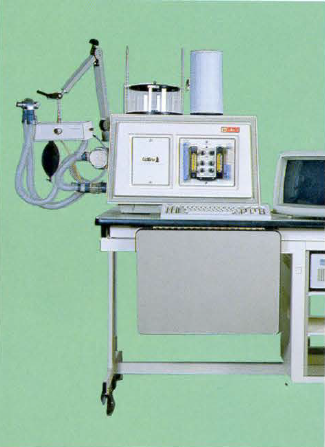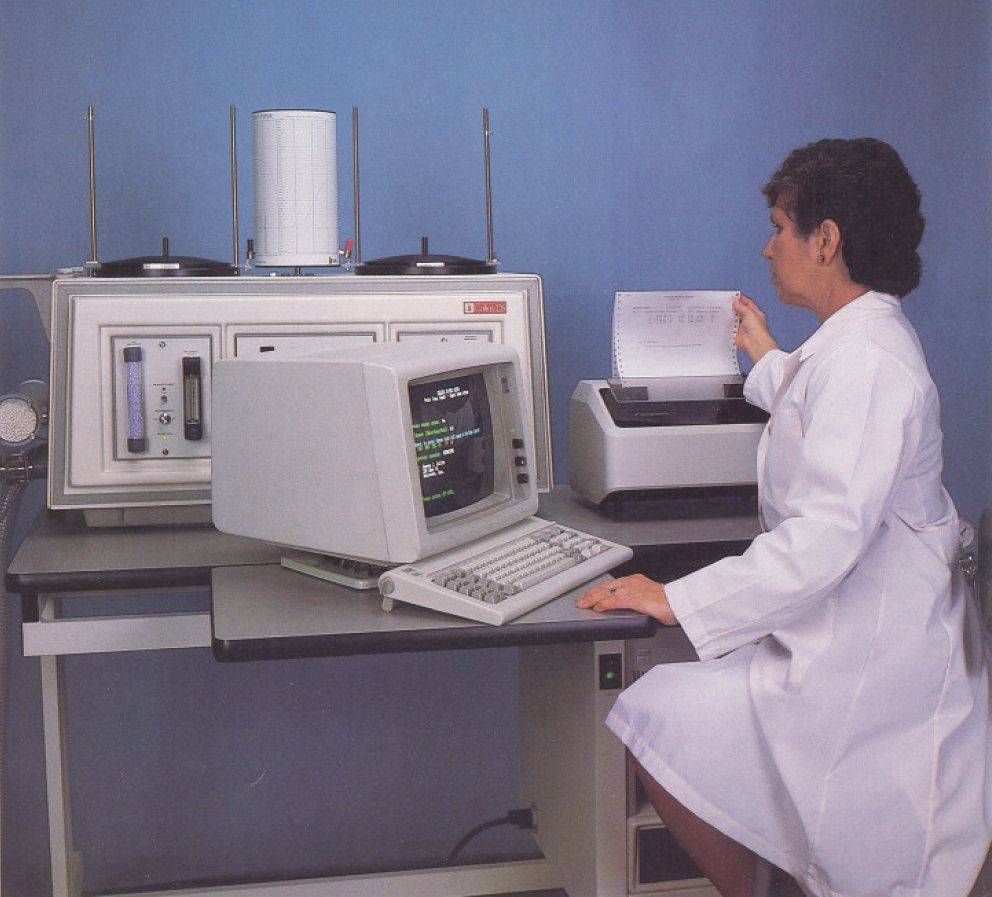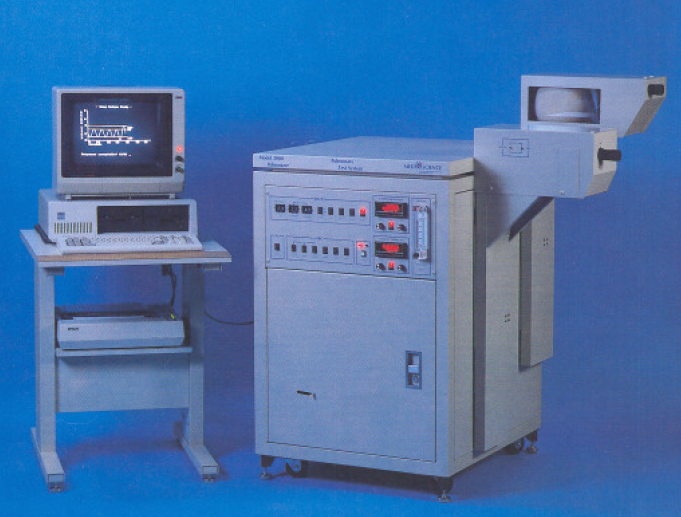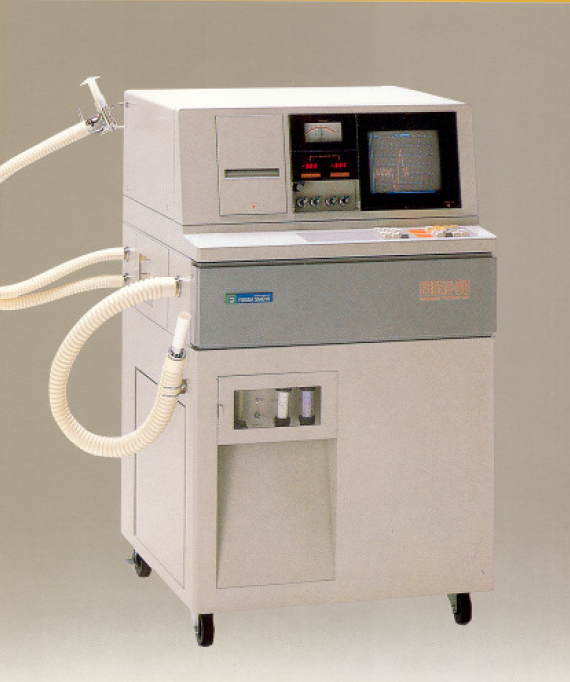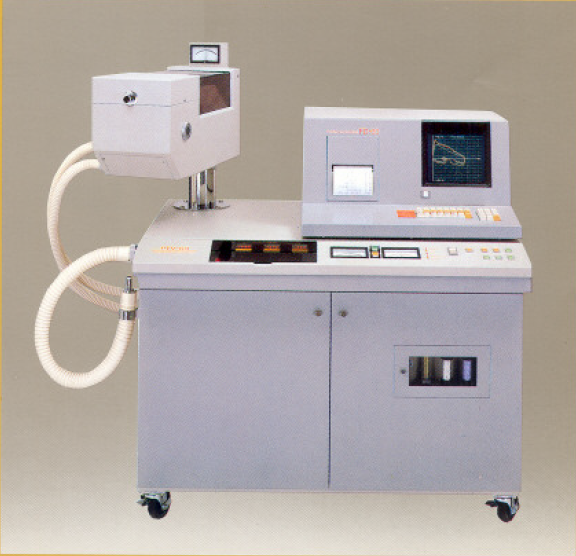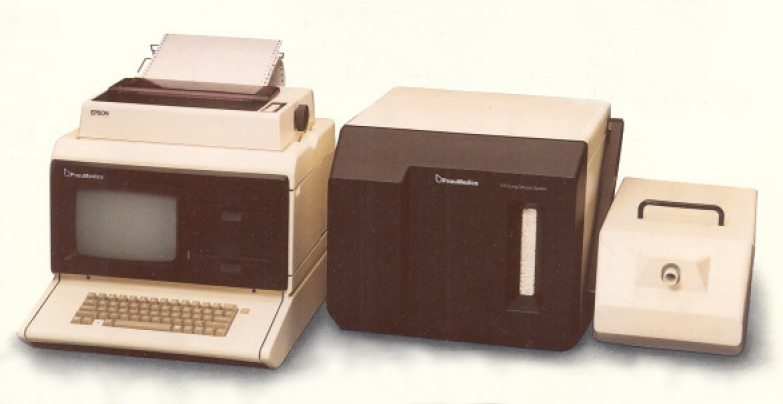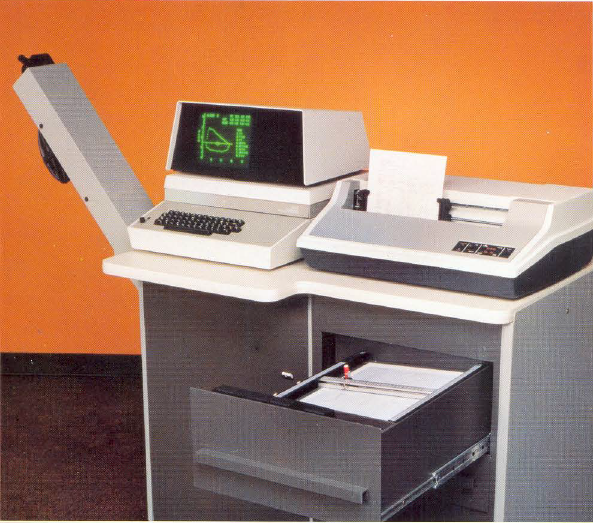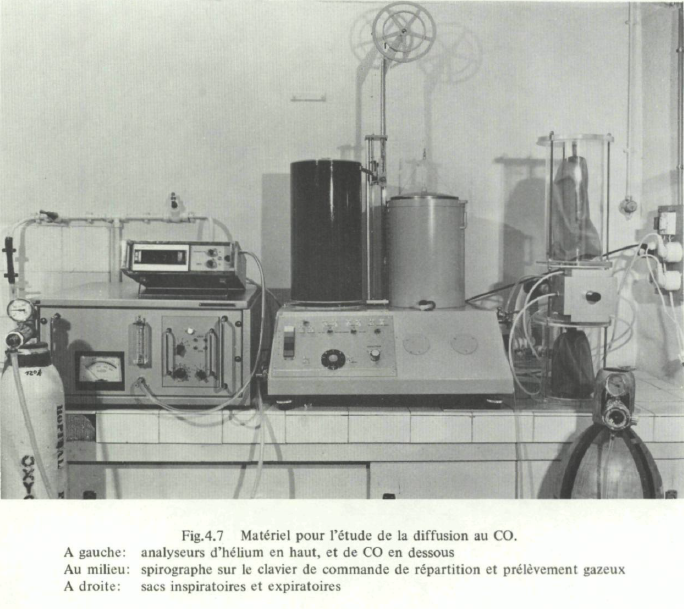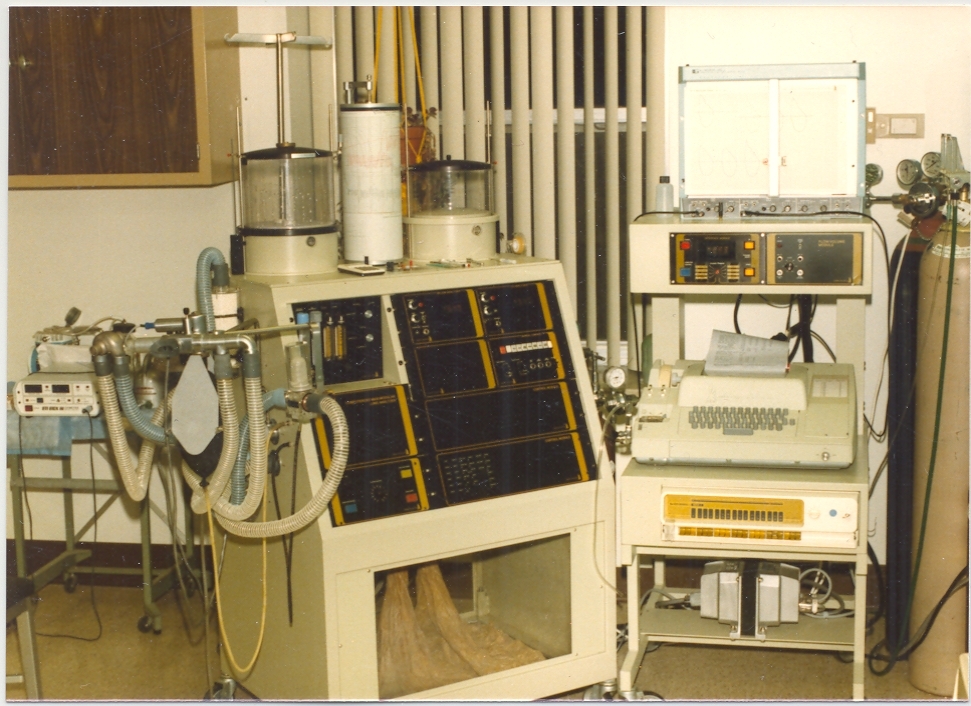The DS-II performed spirometry, helium dilution lung volumes and single-breath DLCOs. Photo is from a sales brochure courtesy of James Sullivan, BA, RPFT, Supervisor, Pulmonary Laboratories, Memorial Sloan Kettering Cancer Center
Category Archives: DLCO
Collins DS Plus, circa 1985
Med-Science Pulmonizer Pulmonary Function Testing System, 1980
Med-Science Series 3000 Pulmonary Function Testing System, 1984
Performed spirometry, helium dilution lung volumes and single-breath DLCO. Could be upgraded to include closing volumes and N2 washout kung volumes. Used a wedge spirometer. Came equipped with a top-of-the line IBM PC XT with dual 5-1/4″ floppy disk drives (!). Photo is from a sales brochure courtesy of James Sullivan, BA, RPFT, Supervisor, Pulmonary Laboratories, Memorial Sloan Kettering Cancer Center.
Fukuda Sangyo FUDAC-30 Pulmonary Testing System, 1984
Photo is from a sales brochure courtesy of James Sullivan, BA, RPFT, Supervisor, Pulmonary Laboratories, Memorial Sloan Kettering Cancer Center.
“Mini-systems using an 8-liter rolling seal type spirometer. Each system contains a 10-inch color CRT, and both test results and respiratory waveforms are displayed on the CRT screen. Records are printed by a silent thermal printer. This model comes in three types. System-1 is the basic type and covers VC, FVC, F-V, MVV and MV tests. System-2 covers FRC test in addition to those of the basic type. System-3 covers FRC and DLco tests in addition to those of the basic type. Every type can be enhanced in system configuration after the initial purchase.”
Fukuda Sangyo FUDAC-60 Pulmonary Testing System, 1984
It came with a 10″ color CRT in 6 different models. The basic unit was capable of performing spirometry, helium dilution lung volumes and single-breath DLCO. N2 washout lung volumes, closing volumes, steady-state DLCO and Viso-V (heliox spirometry) were options. Photo is from a sales brochure courtesy of James Sullivan, BA, RPFT, Supervisor, Pulmonary Laboratories, Memorial Sloan Kettering Cancer Center.
Pneumedics Spirolyzer Pulmonary Testing System, 1984
Gould 5000 IV Pulmonary Testing System, 1983
The Gould 5000 IV was capable of performing spirometry, single-breath DLCO, closing volumes and either helium dilution or nitrogen washout lung volumes. It came with a “large 9″ CRT for real-time graphics”. Photo from a sales brochure courtesy of James Sullivan, BA, RPFT, Supervisor, Pulmonary Laboratories, Memorial Sloan Kettering Cancer Center
DLCO Testing, 1974
Collins Maxi-Modular System, Late 1970’s
Photograph courtesy of James Sullivan, BA, RPFT, Supervisor, Pulmonary Laboratories, Memorial Sloan-Kettering Cancer Center was taken in 1984.
His description: “This system did both ssDLCO and sbDLCO. It has an N2 analyzer, but this wasn’t working when I started in the lab; we used He equilibration for FRC measurement. It used a teletype for data input and output (those things put out a lot of heat…), a Data General computer, complete with the front-panel DIP switches, and a HP X-Y recorder. ….. It was a good system to learn on, because while it was “computerized”, you could still write down He readings and perform your own calculations. The spirometry software (all programs were loaded into the computer through the teletype via a perforated paper tape; loading took about 45 min) was pretty limited, and there were many times I could get more accurate measurements by calculating the tracings off of the kymograph.”
“…the second spirometer bell (on the right) was used for the inspired sbDLCO gas. The bell on the left was the primary spirometer, where spirometry, He equilibration and the volume measurements for both DLCO tests were done.”
